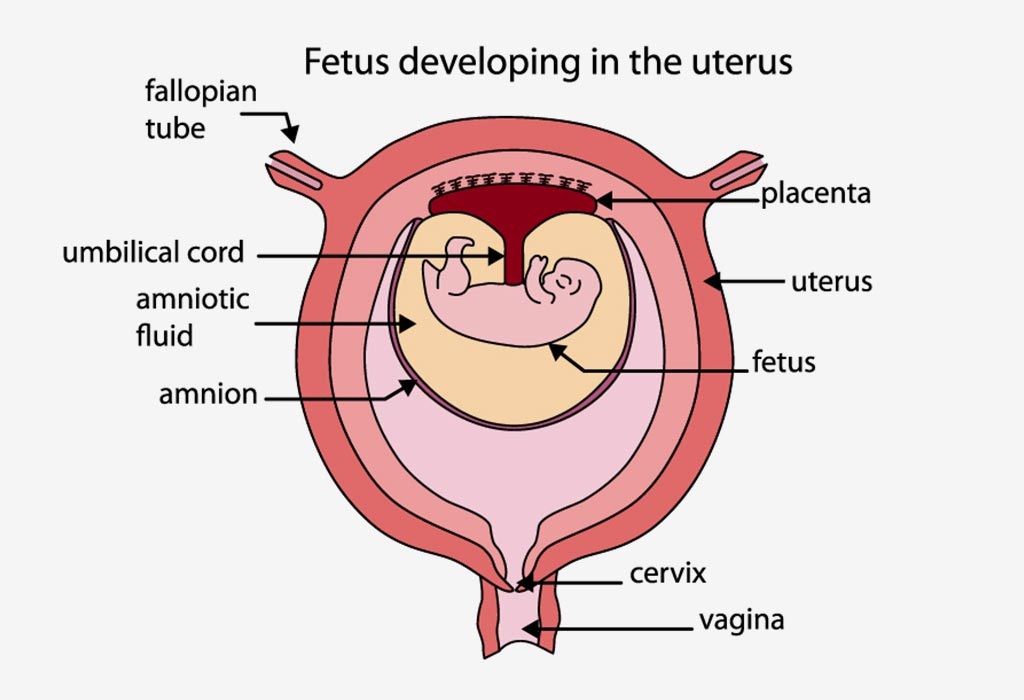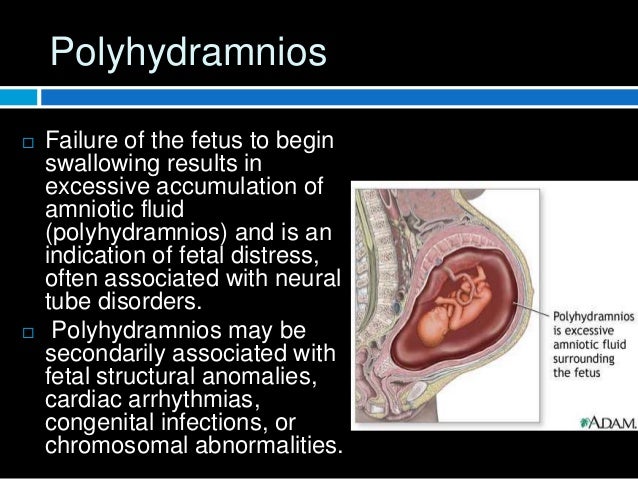

This way, the baby is less likely to be born prematurely.

For example, doctors may recommend bedrest for pregnant women with decreased fluid levels to allow the fetus time to develop before labor begins. Many things can go wrong with your pregnancy that aren't evident on an ultrasound scan, but if you do find out you have oligohydramnios, there are measures you can take to try and prevent premature birth.

Being aware of potential problems with your pregnancy - including risks to your health and that of your baby - can help ensure a safe delivery. Pregnancy is a time when your body is going through many changes - some welcome, others not so much. Heredity is a factor in increasing fluid levels if you are a genetic anomaly, such as trisomy 21 (also known as Down's syndrome), then you will likely have higher-than-normal fluid levels throughout your pregnancy. What Are the Causes of Amniotic Fluid Deficiency? The only causes of increased amniotic fluid are pregnancy complications such as oligohydramnios (low fluid) and polyhydramnios (high fluid). In a normal pregnancy, the amniotic fluid index should be between 8 and 18. What Functions Does Amniotic Fluid Serve? When your body has too much or too little amniotic fluid, it can cause pregnancy issues ranging from a broken placenta to premature labor. What happens if you have too much amniotic fluid during pregnancy?Ĭontinue reading to learn more.

If you have abdominal pain or diarrhea during your third trimester, call your doctor right away. Your digestive system is not working properly. Your urine will be very dark colored because the blood cells pass into it through tiny holes in the skin. If you do not get enough water, you will feel tired and have headaches. You will get water and salt through your milk. The body needs water for many processes, including delivering a baby. After the first week, the doctor can tell how much fluid there is in the uterus by measuring the amniotic fluid index (AFI). The amount of amniotic fluid should increase with each trimester until the baby is born. If the amniotic fluid level gets too low, it can lead to premature labor and delivery. Polyhydramnios occurs when there is too much fluid in the sac. This means you have too much or too little amniotic fluid, respectively. Certain maternal health issues, such as persistent high blood pressure, diabetes, and obesity, may also lead to low amniotic fluid. Before birth, the placenta rips away from the uterine inner wall, either partly or fully (placental abruption). One study revealed that drinking more fluids is also good for increasing amniotic fluid levels in women between 37 and 41 weeks of pregnancy.Low amniotic fluid in pregnancy can be caused by a number of reasons, including: Your water pipe burst. Here are some ways to improve your amniotic fluid levels.ĭoctors recommend pregnant women to drink plenty of water. If you're less than 36 weeks pregnant, you need to go through extra monitoring to make sure your baby is in good shape. Treatment methods will depend on the cause and how far your pregnancy is. It should be treated promptly by your doctor. Having low amniotic fluid can put you or your baby at risk if not treated properly. This condition can occur at any time during pregnancy, but it is most common during the last trimester. Low amniotic fluid (oligohydramnios) is a condition in which the amniotic fluid measures lower than expected for a baby's gestational age. The health and well-being of your baby is determined by the amount of fluid present in the amniotic sac. It also facilitates the exchange of nutrients, water, and biochemical products between mother and foetus. The amniotic fluid is the protective liquid that serves as a cushion for the growing foetus.


 0 kommentar(er)
0 kommentar(er)
